Beyond the Names
What are the stories behind the dorm names on Grounds?
Although the experience of living in student residence halls is now considered by many students central to college life, it wasn’t always so. When UVA constructed dorms on Monroe Hill in 1921 (which later became Brown Residential College), students complained that “compulsory living in the dorms … might mean undermining the tradition of individual liberty,” according to Virginius Dabney, in his book Mr. Jefferson’s University: A History.
But since those days, 20 dorms and two more residential colleges have been built on Grounds and today more than 4,100 students live in them. Some still don’t have air conditioning and others have washers and dryers that text students to inform them their laundry is ready. Each dorm is named after someone, an honor bestowed by the University to men and women who were much beloved by students and faculty. Here are the stories of the people behind the names.
The “Old” Dorms
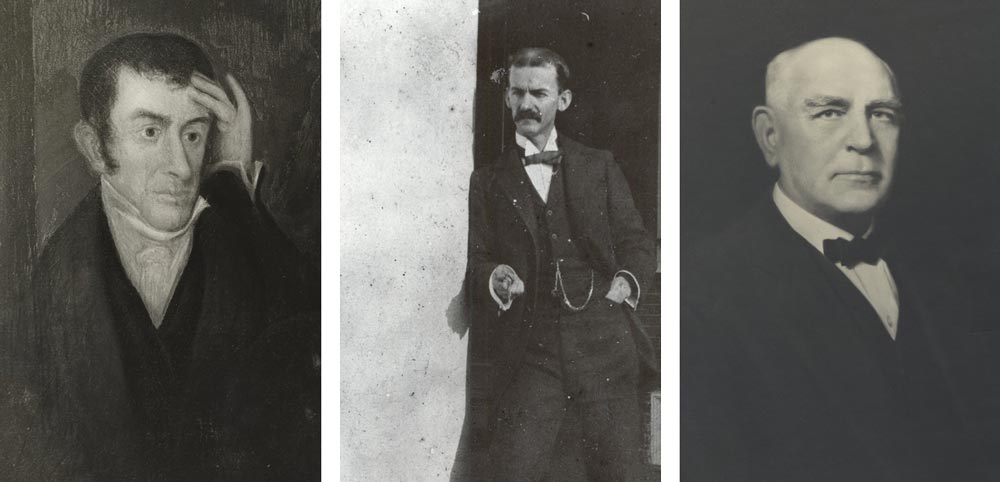
Bonnycastle—Charles Bonnycastle was born in England, and was one of the University’s first professors. A delay in his voyage to the U.S. on the ship Competitor caused the first session of classes to be postponed for a number of weeks, until March 7, 1825. He was appointed chair of natural philosophy, but later transferred to mathematics. He lived with his wife among the first tenants in Pavilion VIII on East Lawn.
Dabney—A close friend of Woodrow Wilson, Richard Heath Dabney received an M.A. from the University and a Ph.D. from Heidelberg University in Germany. He came to be a professor of history and the first dean of the department of graduate studies, and was an active participant in the expansion of the University.
Echols—Born in Texas, William Holding “Reddy” Echols received his B.S. degree in construction engineering from UVA. After gaining work experience at a number of railways in the South, his teaching career began in Missouri, after which he returned to the University as an adjunct professor of mathematics. He is remembered for his attempt to save the Rotunda when the Annex caught on fire in 1895.
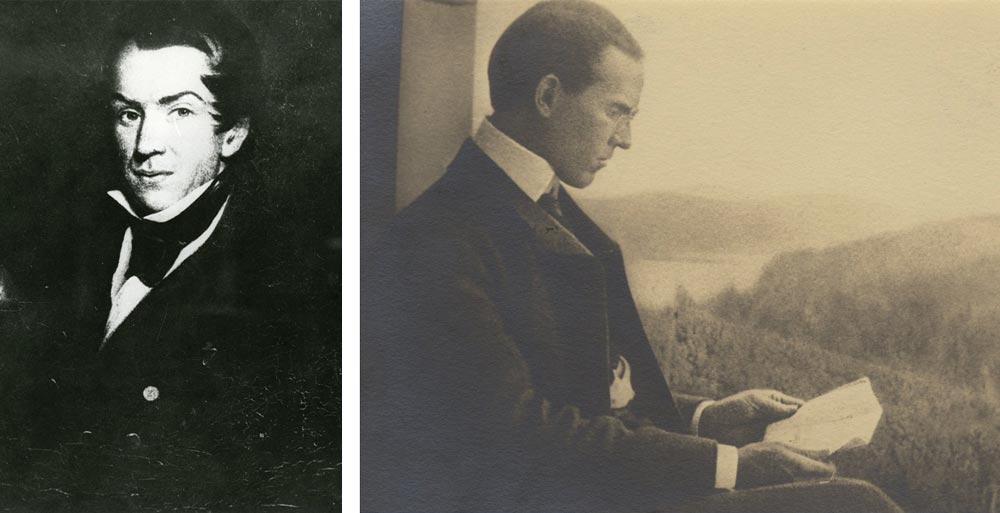
Emmet—Born in Ireland, John Patten Emmet came to the U.S. with his father when he was 8 years old. He studied medicine in New York, and practiced in Charleston, S.C., where a series of lectures he gave on chemistry caught Jefferson’s attention. He was then appointed to the original faculty of the University.
Hancock—Charles Hancock was born in Albemarle County to a physician. He went to the Miller School and then got a B.S. in 1904 from UVA. Before returning to the University to teach mechanical engineering, he taught at Mississippi Agricultural and Mechanical College.
Humphreys—Milton Wylie Humphreys was a Confederate artilleryman and was known as a leading authority on ballistics. At UVA he was a professor of Greek for 25 years and taught courses in Hebrew, botany, and mathematics. His versatility extended to English, modern languages and physics.
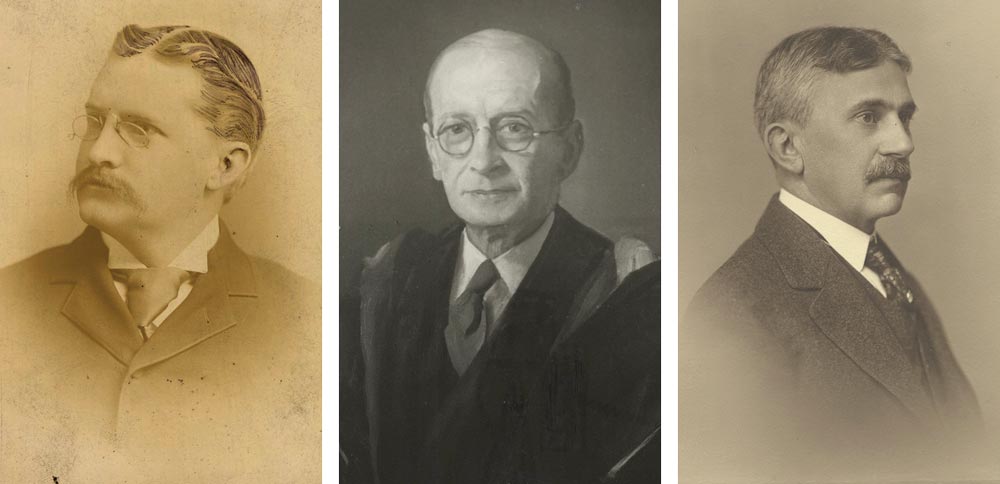
Kent—A native of Louisa County, Charles William Kent received an M.A. degree from the University in 1882. He then founded and taught at a school in Charleston, S.C. After studying in Germany, he returned to UVA to become the first Linden Kent Professor in the English department.
Lefevre—Known as an eloquent lecturer, Albert Lefevre was educated at the University of Texas and Cornell University. He taught at Tulane University, where he met UVA’s president, Edwin Anderson Alderman, whom he followed to Charlottesville to become a professor of philosophy. With William A. Lambeth, he was a co-organizer of the Southern Intercollegiate Athletic Association.
Metcalf—John Calvin Metcalf was born in Kentucky and received degrees from Georgetown and Harvard. He succeeded Heath Dabney as dean of graduate studies in 1923, and remained in the position until 1938.
Page—Born in nearby Louisa County, James Morris Page, along with his brother, operated the Keswick School in Albemarle County. He was a fellow of mathematics at Johns Hopkins University, and then became an adjunct professor of mathematics at UVA. In 1904 he was named the dean of the University and dean of the College, positions he held for the next 30 years.
The New Dorms
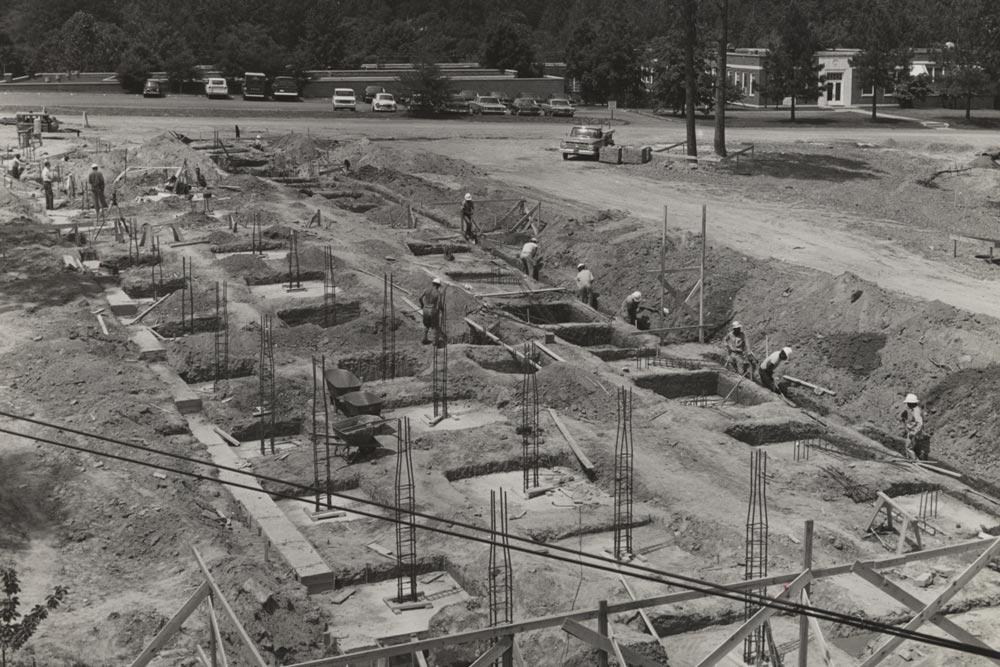
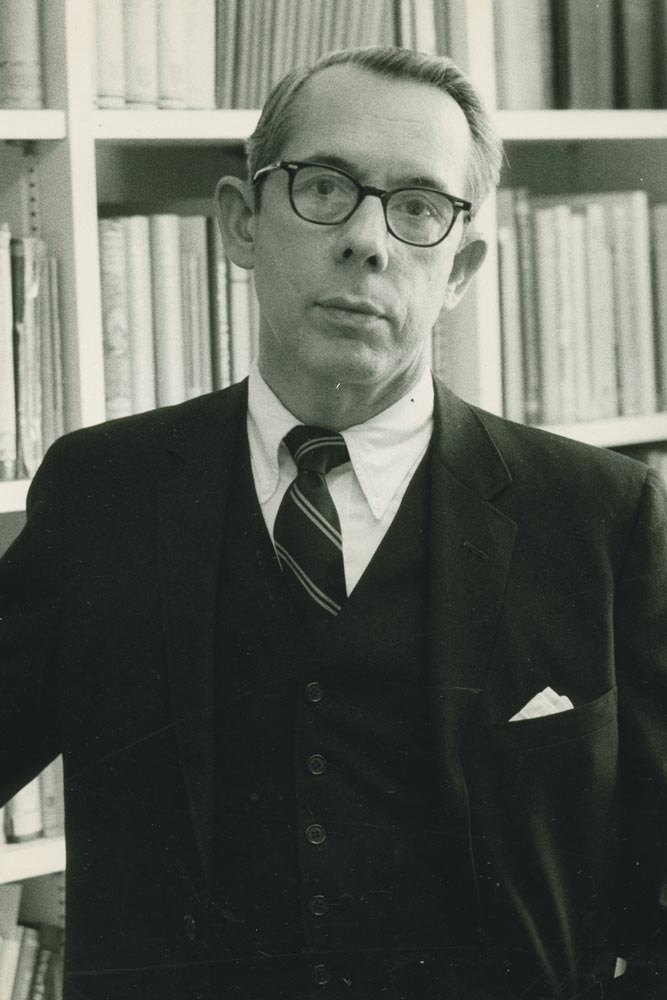
Cauthen—Irby Bruce Cauthen was born in South Carolina and received his Ph.D. from UVA. The recipient of the Thomas Jefferson Award, the Algernon Sydney Sullivan Award, the Raven Society Award and the IMP Society Award, he served as dean of the College of Arts & Sciences from 1962 to 1978. He was awarded the Bronze Star in World War II and was known for his classes on Shakespeare and Milton.
Courtenay—Edward H. Courtenay followed Charles Bonneycastle as UVA’s chair of mathematics and held the position until his death in 1842. A noted mathematician, author and engineer, Courtenay graduated first in his class from West Point and was involved in construction projects for the Army, Navy and the Erie Railroad.
Dunglison—Appointed by Thomas Jefferson as the University’s first professor of medicine, Robley Dunglison was one of the preeminent teachers physicians of the 19th century. Dunglison was the first full-time professor of medicine in an American university and also served as the first secretary of the faculty and its second chairman. A native of Keswick, England, he was the personal physician of Presidents Jefferson, Madison and Monroe and attended the three during their terminal illnesses.
Fitzhugh—A native Virginian, Thomas Fitzhugh received an M.A. degree from UVA in 1883, before going on to study in Rome and Berlin. He taught in Virginia, North Carolina, Kentucky and Texas, and eventually became chairman of UVA’s Latin department in 1902.
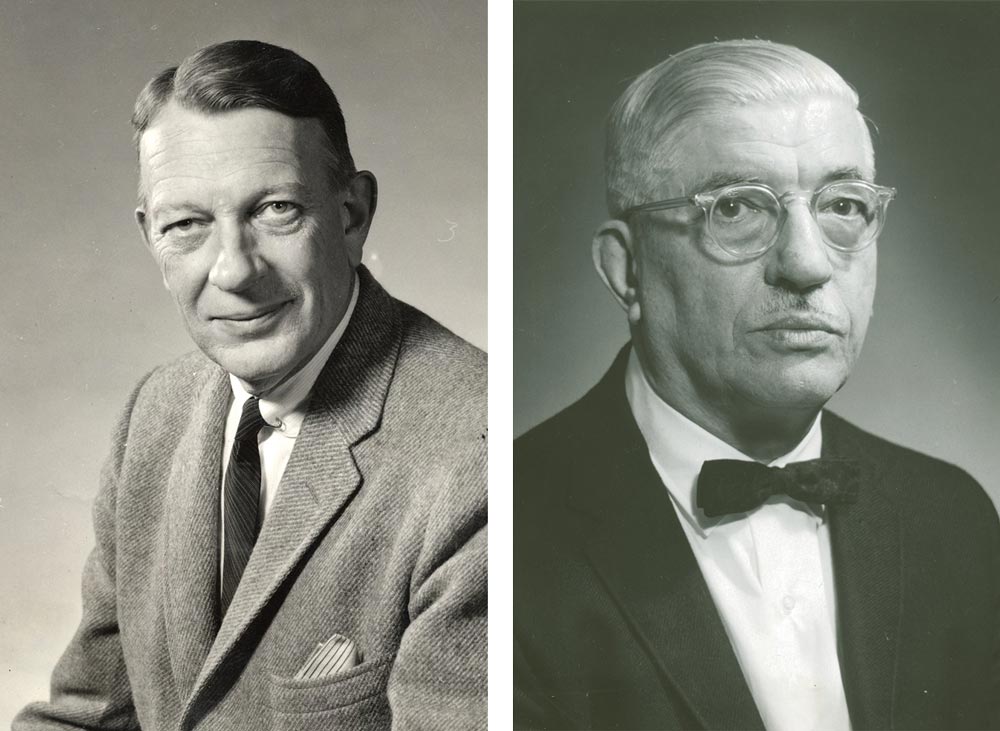
Gooch-Dillard—A Rhodes Scholar, Robert Kent Gooch received undergraduate and graduate degrees from UVA, and a Ph.D. from Oxford University. He taught at William and Mary, and eventually at UVA. During his time in Charlottesville, he wrote several books, contributed to Political Science Quarterly and was elected to Phi Beta Kappa.
Hardy Cross Dillard was born in New Orleans. He went to both UVA and West Point. He joined UVA’s faculty in 1927 and was appointed dean of the School of Law in 1963. After his retirement, he began a five-year term on the International Court of Justice at The Hague.
Woody—T. Braxton Woody, a 1923 UVA alumnus, was a French professor at the University. In 1968, President Shannon asked Woody to head a committee to consider admitting women to the College of Arts & Sciences. In her book The University of Virginia: A Pictorial History Susan Tyler Hitchcock (Grad ’78) wrote that Woody had opposed coeducation for years, and Shannon thought that the experience of running the committee would change his mind. In November of 1968, Woody and his committee “recommended rescinding restrictions on the admission of women to the College.”
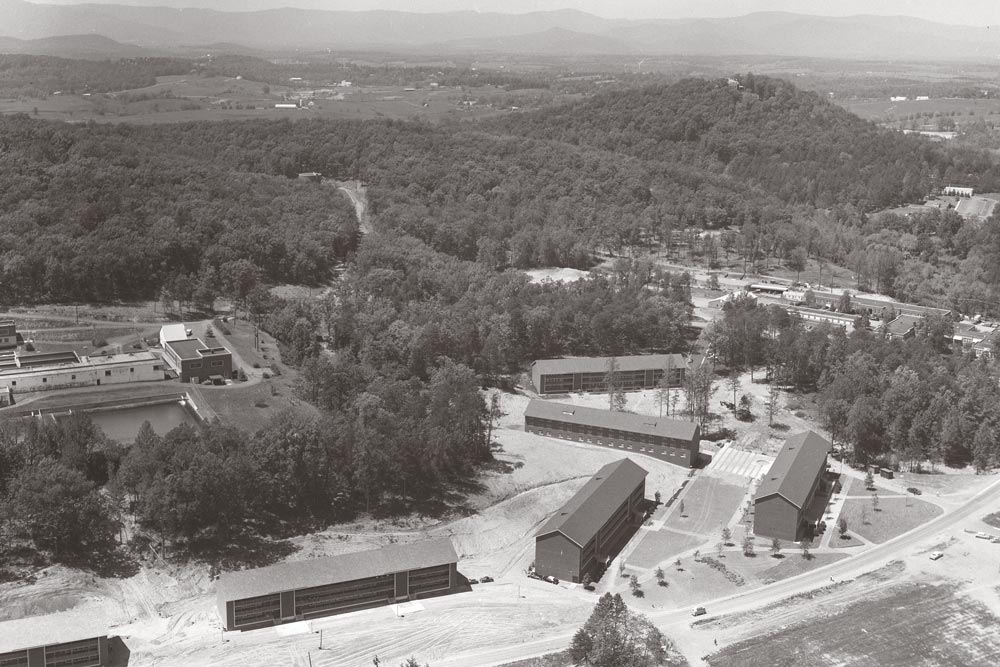
The “New” New Dorms
Balz-Dobie—Born in Charlottesville, Albert George Adam Balz received his B.A. and M.A. degrees from the University, and a Ph.D. from Columbia. After completing his degree there, he returned to UVA and became a philosophy professor in 1920. Balz oversaw the planning and construction of Lane High School as chairman of the Charlottesville School Board.
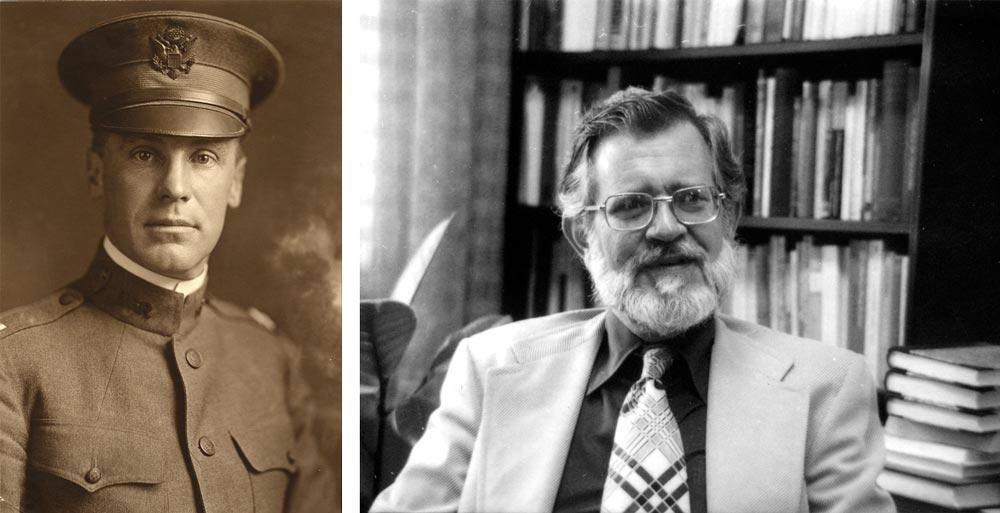
Armistead Mason Dobie received undergraduate, graduate and law degrees from the University, as well as a J.S.D. from Harvard in 1922. He was dean of the School of Law at UVA until 1939, when he accepted a federal judgeship for the Western District of Virginia. He was later appointed to the U.S. Court of Appeals. He lived on Preston Place.
Kellogg—Robert L. Kellogg was a former dean of the College of Arts & Sciences, chairman of the English department, and the founding principal of Brown Residential College. He died in 2004.
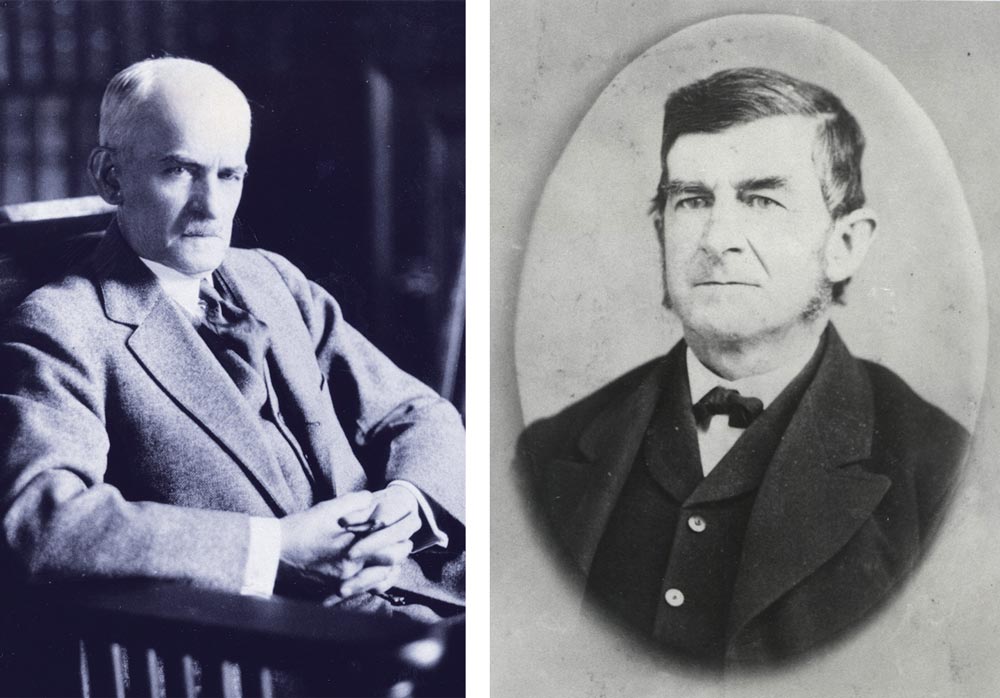
Lile-Maupin—Born in Alabama, William Minor Lile received his B.L. degree from UVA in 1882 and practiced law in Lynchburg. He returned to the University in 1893, becoming a law professor and later dean of the School of Law. He was a founder and editor of the Virginia Law Register, and was active in drafting the Virginia Constitution of 1902.
Physician, chemist and teacher, Socrates Maupin received his medical degree in 1830 and his M.A. from the University in 1833. He then became a professor of chemistry at UVA, and eventually chairman of the faculty. He guided UVA through the Civil War, surrendering the University to Union Gen. George Armstrong Custer in 1864 rather than risking the Grounds being torched. He died in 1871 when he was thrown from a horse-drawn carriage in Lynchburg.
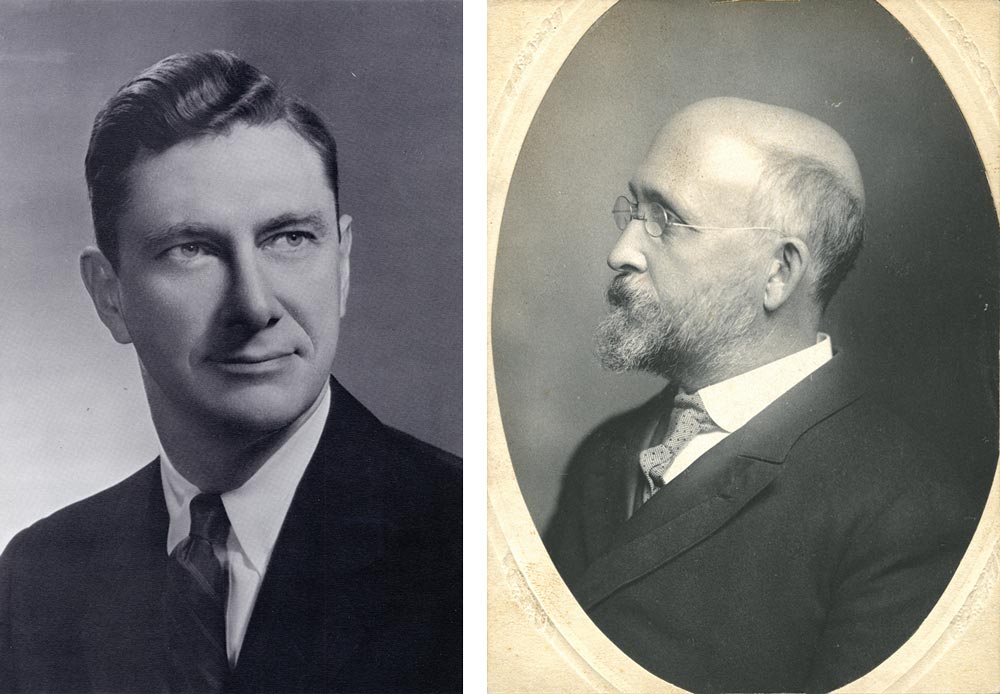
Shannon—The fourth president of the University, Edgar F. Shannon oversaw a long period of growth among students and faculty. It was during his time, in 1970, that the University implemented coeducation, and Shannon also worked to recruit African-American students. During the student protests of the ’60s, he gave a speech from the Rotunda in which he condemned the "anti-intellectualism and growing militarism in the national government," and received a standing ovation. In 1990, the Shannons established the Foundation for Excellence in Public Education for the Charlottesville/Albemarle region.
Tuttle-Dunnington—Albert Henry Tuttle was born in Ohio and received a B.S. from Pennsylvania State College before going on to teach microscopy at Harvard. He was also a professor of zoology and comparative anatomy at Ohio State University from 1874 to 1888. At UVA, chairman of the biology department from 1888 until 1913. Tuttle was the author of numerous books and articles in the field of bacteriology and histology.
Widely loved as a teacher, Francis Perry Dunnington was born in Baltimore and received three degrees at UVA. He was known as one of the finest analytical chemists of his era, and received the Charles H. Herty Medal in 1935 for his services to industrial chemistry in the South. He contributed to religious life at the University, and was long active in the temperance movement in Virginia and in the YMCA.
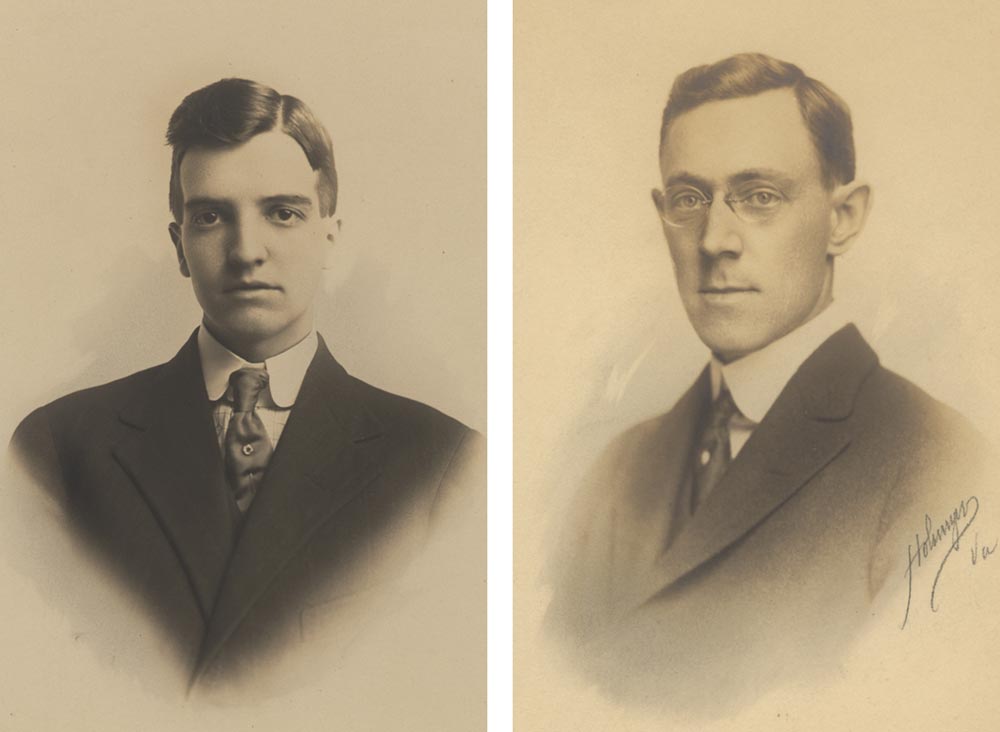
Watson-Webb—Born in Chatham, Va., Thomas Leonard Watson received undergraduate and graduate degrees from UVA, and then a Ph.D. from Cornell, where he was a member of the 6th Peary Arctic Expedition that traveled to Greenland in 1896. He was a professor of geology at the University for 17 years.
A native of Suffolk, Va., Robert Henning Webb received degrees from Hampden-Sydney and Harvard. In 1912 he was called to the University to succeed Milton Wylie Humphries as a Greek professor. Several of his translations of Aristophanes’ plays were published after his death, and he was described by UVA president Colgate Darden as "one of the great humanists of the academic world."
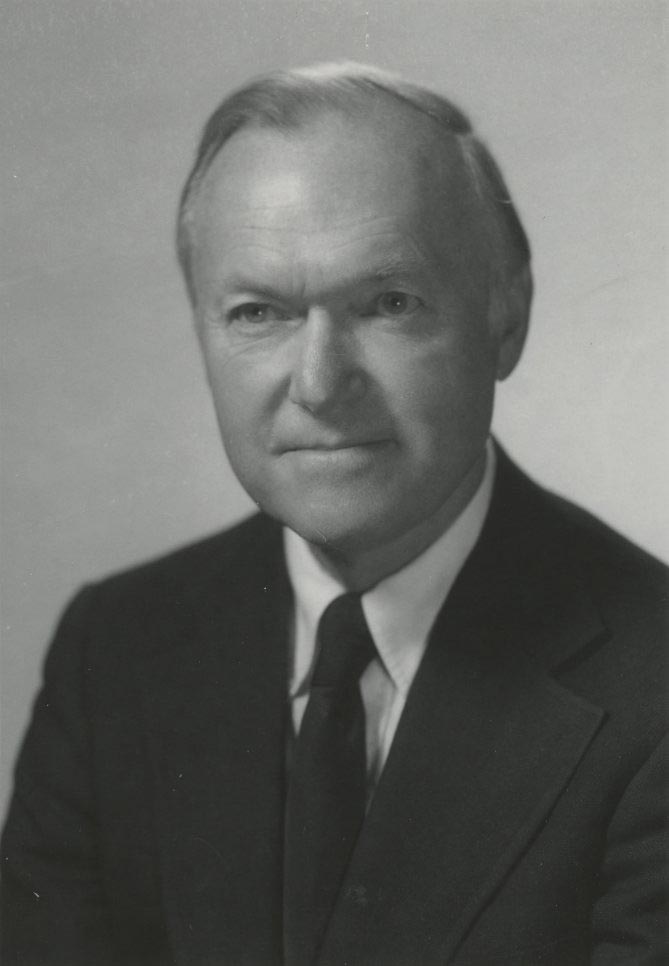
The Residential Colleges
Brown—Brown College is named after the George Garvin Brown family, whose endowment to the University commemorates four relatives who attended UVA in the first three decades of the 20th century.
Hereford—Louisiana native Frank Hereford came to UVA at the age of 17 and received undergraduate and graduate degrees in physics. He joined the faculty at age 26, eventually serving 11 years as the University’s fifth president.
The International Residence College
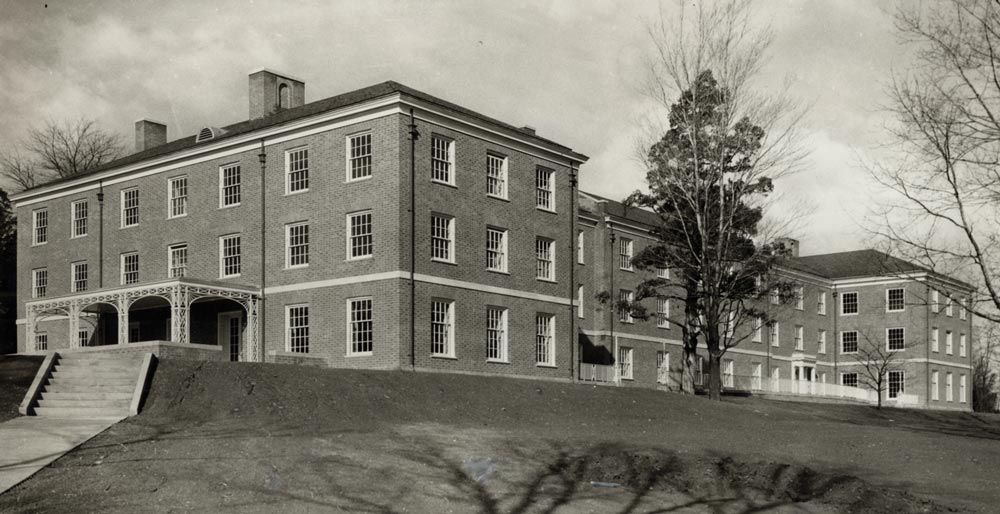
The buildings that compose the International Residence College are named after several University notables.
The first woman to be appointed a member of the University of Virginia Board of Visitors, Mary Munford, was an advocate of education and women’s rights, and worked to improve race relations. Roberta Hollingsworth Gwathmey was appointed dean of women in 1934 and served until 1967. During her time, she saw the enrollment of women increase from 125 to 809. She was also the first woman to receive a Ph.D. from the Romance languages department at UVA. Ivey Lewis was a biology professor who served as dean of the University and dean of the College of Arts & Sciences, and Llewellyn G. Hoxton was chairman of the department of physics from 1916 until 1948.
The “New” New Dorms
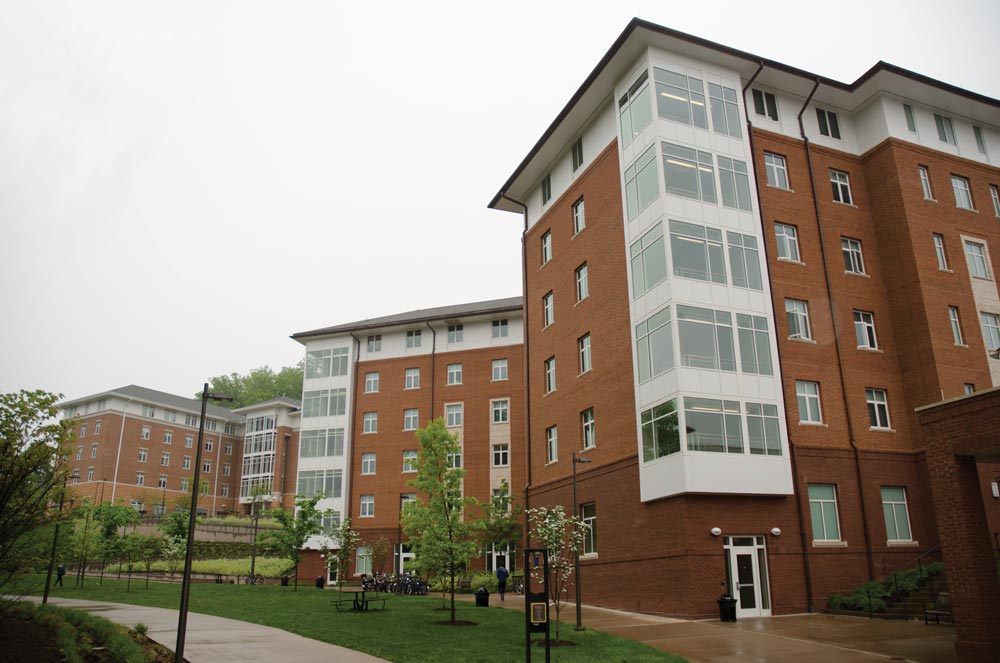
In 1963 and 1967, the University built student housing on Alderman Road and Observatory Hill. These buildings, known as the “new” dorms, are now being replaced with more efficient, six-story structures known as the “new” new dorms.
“Rebuilding them enables us to plan for future growth,” says Richard Kovatch (Grad ’83), associate vice president for business operations at UVA.
There were more pressing reasons to demolish the dorms beyond the need to accommodate more students. “The construction wasn’t good enough,” says Kovatch. “The problems were significant. We had deteriorating concrete, and it was costing several hundred thousand dollars a year to maintain. We had to constantly inspect it.”
“It was more efficient to tear them down than to renovate them,” says Gay Perez (Col ’87, Educ ’92), associate dean and executive director of housing and resident life. The construction process allowed for the recycling of more than 75 percent of the materials from the demolished structures, with debris going to a recycling facility that crushed masonry to create new building materials.
The “new” new dorms will retain their names—for instance, Balz and Dobie will be replaced by a building called Balz-Dobie—and will far surpass their predecessors in amenities. “They’re air conditioned,” says Perez. “They have space for group study, they have ADA-compliant elevators, and [rooms on both sides of the] corridors—instrumental for building community.”
The dorms even have a laundry alert system, where students can consult a website that will tell them how many machines are available and when they’ll be free. Students can also have the program text them when their laundry is done.
As for the old dorms, which were built in 1951, they’re still holding up. “McCormick Road dorms not only have historical significance, they continue to be extremely popular with incoming students,” says Perez. “Structurally sound, the only missing elements from the student perspective are air conditioning and more lounge or gathering space. As a result, the University is in the process of contracting with an engineering firm to conduct a feasibility study to upgrade these buildings.”
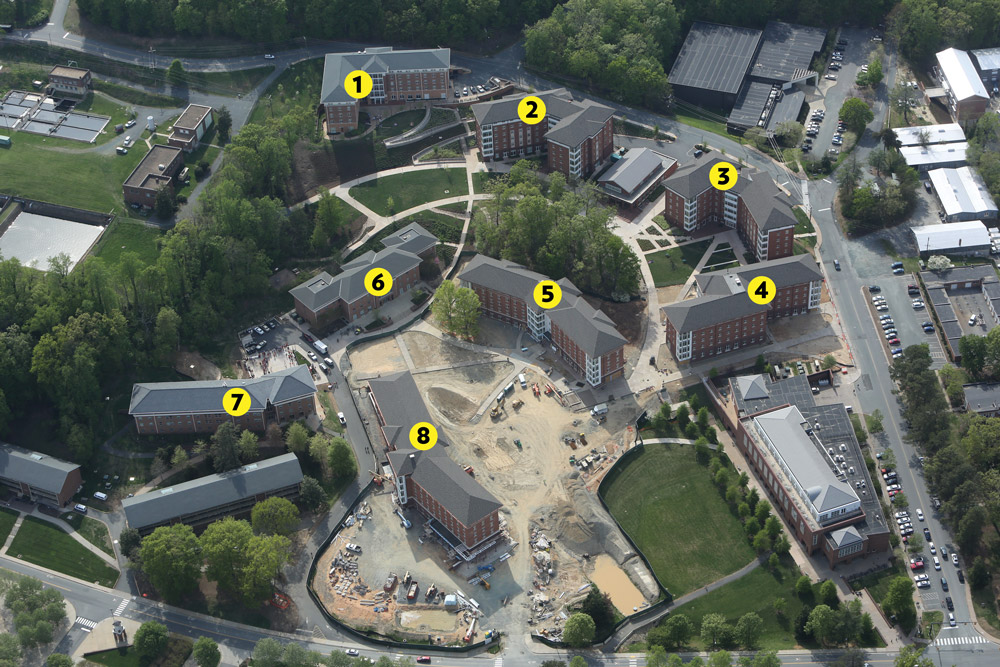
1. Kellogg
2. Balz-Dobie
3. Watson-Webb
4. Lile-Maupin
5. Tuttle-Dunnington
6. Cauthen
7. Woody
8. Shannon